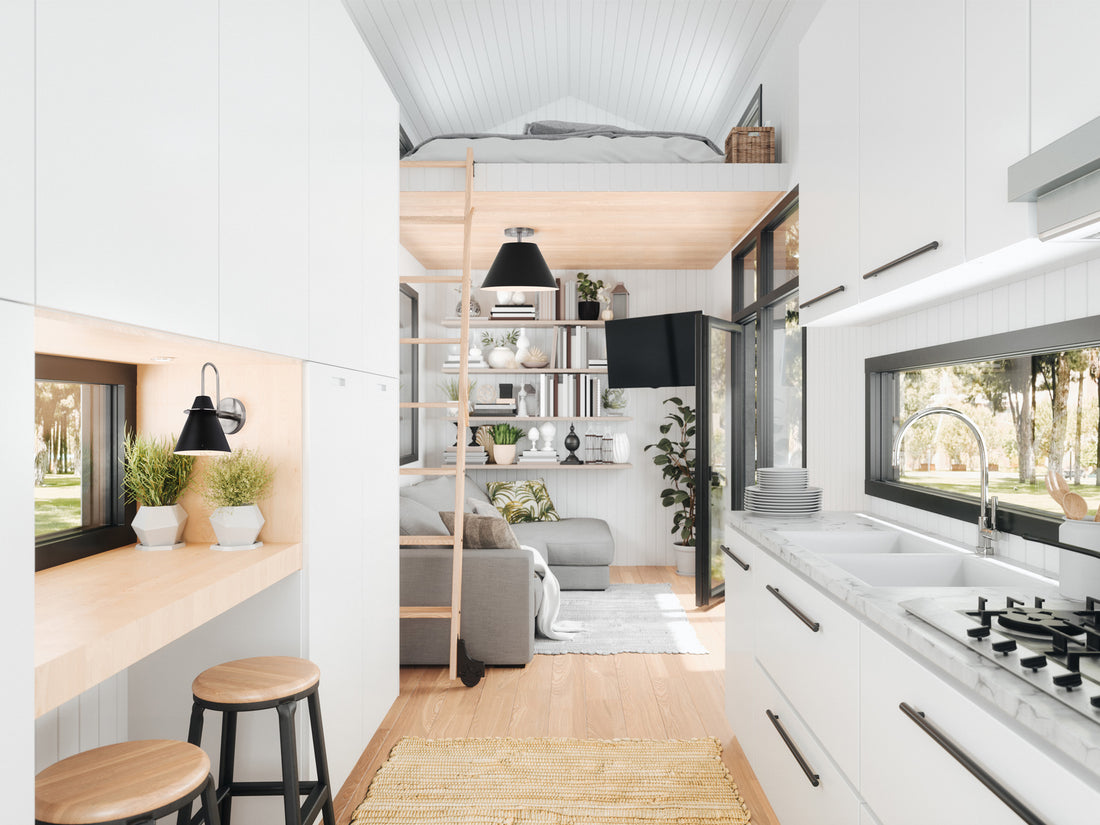
What’s The Difference Between Modern and Contemporary Interior Design?
Share
The terms "modern" and "contemporary" are often used interchangeably in interior design, but they really refer to distinct styles with unique characteristics. Let’s take a look at the breakdown of differences between modern and contemporary design:
Modern Design
Time Period: Modern design refers to a style that emerged in the early to mid-20th century, particularly from the 1920s to 1950s.
Characteristics:
- Clean Lines: Modern design features strong, clean lines and minimal ornamentation.
- Functionality: Emphasis on function over form, with a focus on practical, useful design.
- Materials: Uses natural materials like wood, leather, and stone, as well as industrial materials like steel and glass.
- Color Palette: Typically features neutral colors, such as whites, beiges, and grays, with occasional bold accents.
- Furniture: Furniture tends to be low to the ground, with a sleek, streamlined appearance.
Influences: Influenced by Scandinavian design, Bauhaus, and mid-century modern elements.

Contemporary Design
Time Period: Contemporary design refers to the design styles of the present moment. It is dynamic and constantly evolving, reflecting current trends and innovations.
Characteristics:
- Fluid Style: Unlike modern design, contemporary design is not tied to a specific period and can incorporate a variety of styles and influences.
- Innovative: Embraces new technologies, materials, and trends, often including eco-friendly and sustainable practices.
- Materials: Often uses a mix of traditional and non-traditional materials, including metal, glass, and new synthetics.
- Color Palette: Broader and more varied than modern design, often featuring bold colors and contrasts alongside neutrals.
- Furniture: Furniture can range from sleek and minimalist to bold and sculptural, with an emphasis on comfort and aesthetics.
Influences: Influenced by global trends, technological advancements, and changing cultural preferences.

Key Differences
- Historical Context: Modern design is historically specific, rooted in the early to mid-20th century, whereas contemporary design is current and ever-changing.
- Design Approach: Modern design adheres to a specific set of principles and aesthetics from its time period, while contemporary design is more flexible and eclectic, often blending various styles and influences.
- Materials and Techniques: Modern design favors natural and industrial materials common in its era, while contemporary design is open to new, innovative materials and techniques.
- Aesthetic Evolution: Modern design has a more consistent aesthetic, whereas contemporary design evolves with the times, making it more fluid and adaptable.
Understanding these distinctions can help you choose the style that best suits your preferences and the specific needs of your space. Whether you’re drawn to the timeless elegance of modern design or the ever-evolving flair of contemporary design, each offers unique ways to create a beautiful and functional home.
Happy shopping,
𝒞𝑜𝒸𝑜

